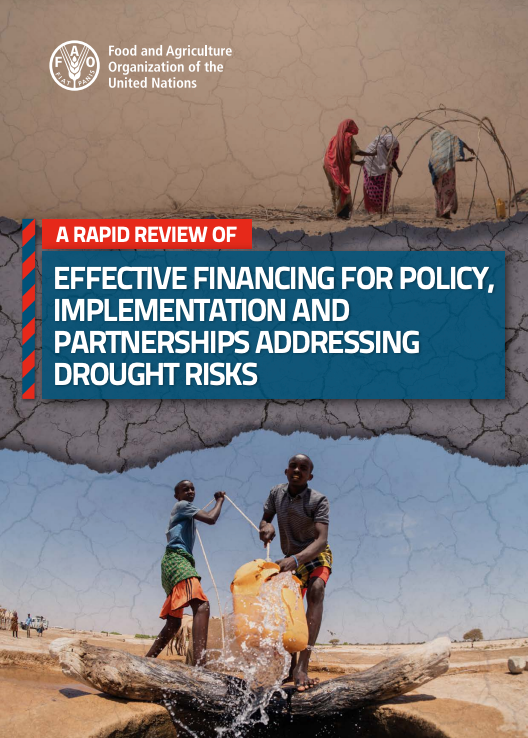A rapid review of effective financing for policy, implementation and partnerships addressing drought risks

The present report was informed by the work of the Intergovernmental Working Group on Drought under the United Nations Convention to Combat Desertification (UNCCD), and its holistic approach with the other Rio Conventions, as well as the international sustainable development and disaster risk reduction communities. The publication builds on a recent review of drought risk mitigation, preparedness and response measures commissioned by FAO with partners in the Integrated Drought Management Programme, alongside a range of other recent global reviews, and the work of the Intergovernmental Working Group of the UNCCD on drought.
The report presents an overview of current knowledge and thinking concerning the effectiveness of three distinct layers of financing that set out to address drought risks in different ways. For each of these, results are conceptualized and measured in different ways for disaster risk reduction, adaptation to climate change, and transformative green finance. There is not yet any coherent global system to generate an overview of progress and gaps at the global level, nor to orient public policies and learning processes within the affected countries. This initial review explores how these gaps could be filled. It also takes a first step toward doing so by bringing together insights from the current available systems for targeting and tracking financing to address drought risks through the three layers of actions, target indicators and evidence systems.